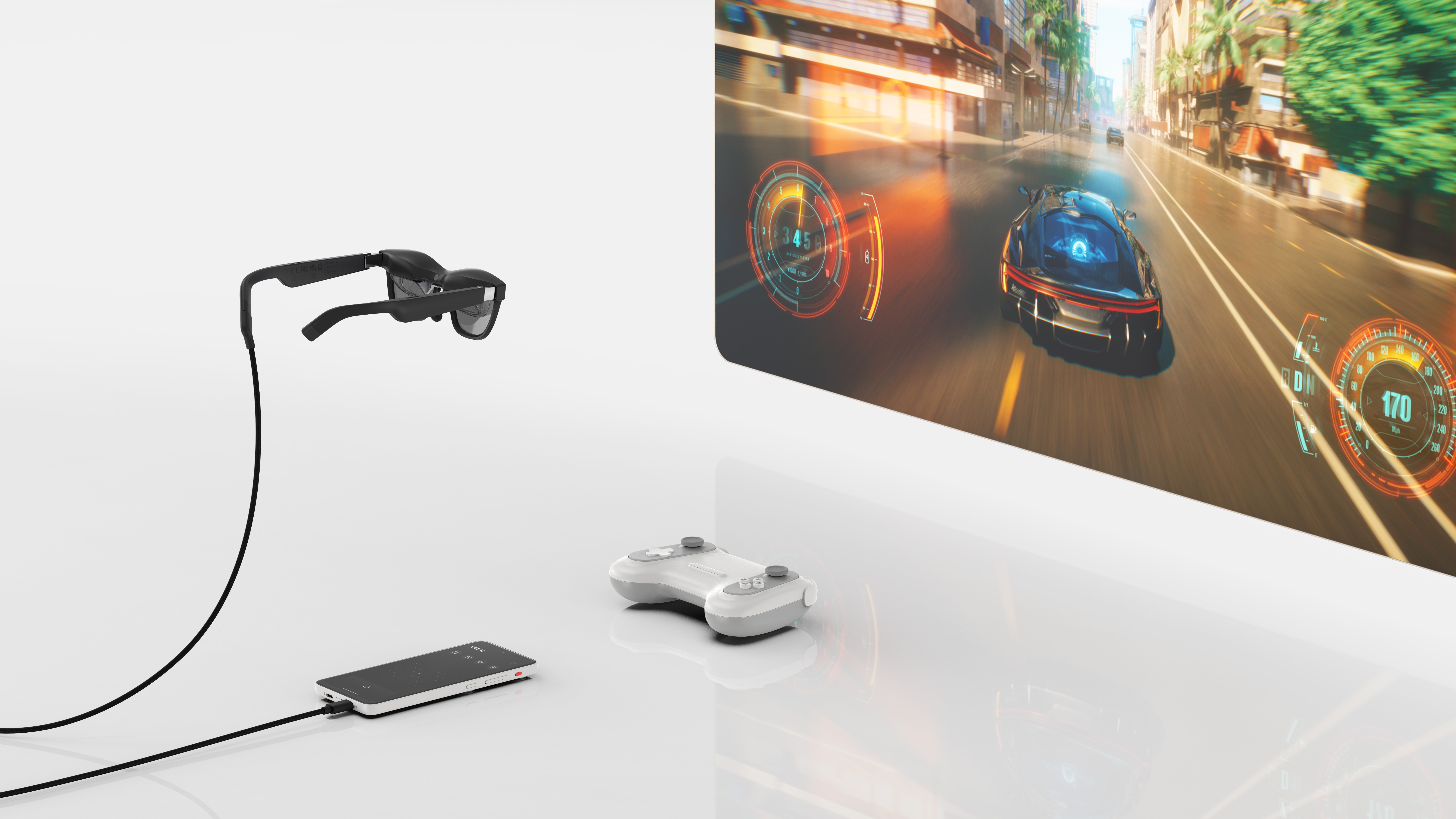Xreal's cheap smartphone-like gadget solves the biggest issues with AR smart glasses
The Xreal Beam Pro could be the AR add-on we need

Xreal has unveiled its latest gadget at the Augmented World Expo (AWE) 2024 XR industry showcase, but it’s not a pair of AR smart glasses – it’s a smartphone-like device called the Xreal Beam Pro.
The Beam Pro is a successor to the original Beam adapter, and it solves many of the issues I’ve had with this generation of AR specs – and it’s surprisingly affordable.
The upgraded Beam Pro is a whole new Xreal glasses attachment that’s compatible with Xreal Air and Xreal Air 2 models – including the Pro and Ultra. Simply connect it to your specs with a USB-C to USB-C cable and they’ll turn into bonafide spatial computers that run on Android 14 and NebulaOS (Xreal’s home-grown operating system).
You can control what you see on the Xreal glasses using the Beam Pro’s 6.5-inch LCD 2K touchscreen. You can also use the screen just like you would on a smartphone to manage Play Store apps and tweak your settings, and thanks to the dual 50MP cameras on its rear you can capture spatial images and 3D video at 1080p and 60fps.

Best of all it comes in at just $199 / £189 for the 6GB of RAM / 128GB storage model, while the 8GB of RAM / 256GB storage model will set you back $249 / £239. Preorders are live right now at XREAL.com for the United States, United Kingdom, China, Japan, Germany, France, Italy and Netherlands; availability and pricing for Australia are TBC.
If you’re picking up the Beam Pro and a pair of Xreal glasses you can save on bundles, and those of you with a 1st-gen Beam can save $50 / £40 on a Beam Pro if you preorder one by July 10, 2024.
The AR accessory we’ve needed
I’ve not yet had the chance to try out the Xreal Beam Pro, but it sounds like the AR add-on we’ve been needing for a while by solving a bunch of issues I’ve had with the tech when testing it out.
Firstly, finding compatible gadgets can be confusing. There are all sorts of compatibility issues thanks to hardware and software nuances that are confusing if you aren’t techy. While the original Beam was billed as a potential solution, it still suffered with compatibility issues because it couldn’t be used without a smartphone, while if you pick up the Pro and a pair of Xreal Airs you know you’ll have everything you need.
Sign up for breaking news, reviews, opinion, top tech deals, and more.
Second, it solves the battery annoyances I’ve had thanks to its two USB-C ports. The Xreal glasses (and other wired AR specs) can burn through your phone’s charge, and there’s no way to charge your phone and use the glasses at the same time. That’s not an issue with the Beam Pro, as you can use it and connect it to power at the same time.

Finally, it seems like good value for money. Without any bundle discounts an AR glasses and Beam Pro setup costs between $498 and $648 / £528 and £638, which is a little more expensive than a Meta Quest 3.
While AR isn't prohibitively expensive, it can feel like you're getting relatively little bang for your buck compared to XR devices such as VR headsets because of the aforementioned compatibility and complexity issues.
The Beam Pro gives you a simple plug-and-play option that’s a pocket TV and 3D camera and which doesn’t require other tech – just some subscriptions to the best streaming services.
I’ll obviously need to try the Beam Pro out to verify Xreal’s bold promises, but if you’ve been waiting for AR tech to start feeling worthwhile, this is your notice to start paying attention to the space – and maybe even finally dive in.
You might also like

Hamish is a Senior Staff Writer for TechRadar and you’ll see his name appearing on articles across nearly every topic on the site from smart home deals to speaker reviews to graphics card news and everything in between. He uses his broad range of knowledge to help explain the latest gadgets and if they’re a must-buy or a fad fueled by hype. Though his specialty is writing about everything going on in the world of virtual reality and augmented reality.